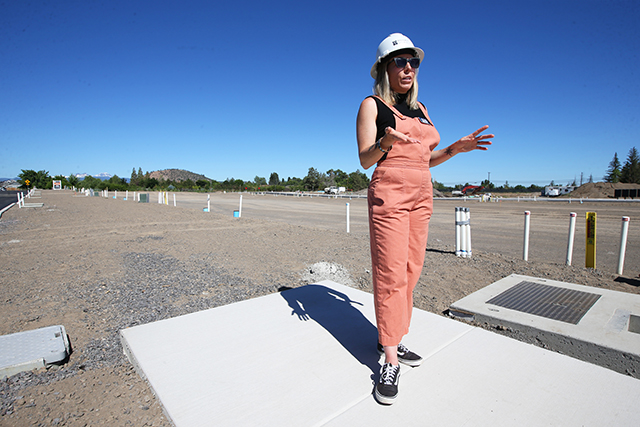Guest column: The U.S. needs a truth and reconciliation commission
Published 10:15 am Tuesday, July 22, 2025

- U.S. and Canadian flags are displayed before an event with Ontario Premier Doug Ford and the U.S. Chamber of Commerce, in February, in Washington. (AP Photo/Mark Schiefelbein)
On a recent trip to western Canada, the first public meeting I attended provided me with a very different perspective on immigration than we are currently receiving in the United States. The speaker began with a statement like: “Good Morning. My name is ______ and I am a third generation settler of mixed Polish and Irish decent, and I would like to begin by acknowledging that the land on which we gather, and that I am privileged to call my home for the last twenty years, is the Treaty territory of the Nehiyuk (Cree).”
Growing out of a “Truth and Reconciliation Commission,” which acknowledged that Canada’s colonial history had systematically removed indigenous peoples from their lands, families, communities and cultural practices by force, such land acknowledgement statements like the one above are required at the beginning of all public events as a show of respect for indigenous peoples. They recognize their long-standing presence and connection to the land, and express an intention to establish healthy, reciprocal relationships, and a peaceful reconciliation. Finally they imply that without such a declaration all non-native peoples in Canada would be undocumented immigrants.
Currently in the United States the assumption seems to be that an undocumented immigrant is anyone who is tattooed, an unskilled physical laborer or not European or white. Additionally, they are assumed to be criminals dangerous enough to be deported by ICE even to a country not of their origin. The absence of due process and deportation within as little as six hours, makes disproving such assumptions impossible.
Trending
Although the colonial history of United States is similar to that of Canada, what constitutes an undocumented immigrant is now very different.
Settlement of the United States was informed by “Manifest Destiny”, a quasi-Christian doctrine that American settlers were destined to expand westward until they occupied the entire continent from Atlantic to Pacific. Indigenous people were considered savages unable to wisely use the land they occupied and so deserved to be exterminated by war, incarceration, and cultural obliteration. A common expression was “the only good Indian is a dead Indian.” Making war on native peoples, confining them to reservations, and sending indigenous children to schools where they were stripped of their culture, including their belief systems, languages, and clothing and taught to be more like the immigrants who had displaced them was summarized in the slogan: “Kill the Indian, save the man.”
Similarly, Mexicans who occupied California, New Mexico and Texas were forcefully removed in the 1846 Mexican-American War. Finally, kidnapping Africans to the United States and enslaving them for White settlers’ economic gain completed the Imperialistic movement which constituted the formation of the United States. This historic displacement of Indians, Mexicans, and Africans was based upon the idea that the Anglo-Saxon Race was separate, innately superior and destined to bring stable government, prosperity, and Christianity to the American continent. It constitutes the idea of “American exceptionalism” rooted in our settlers’ Puritan Heritage.
In 1903 when Emma Lazarus’ Poem was attached to The Statue of Liberty in New York Harbor, the United States had already become primarily a nation of immigrants. But her poem idealistically redefined that monument as a symbol that the United States welcomed them all, especially the downtrodden. “Give me your tired, your poor, your huddled masses yearning to be free. The wretched refuse of your teaming shore. Send these the homeless, the tempest tossed to me.” Currently the Trump administration’s fear-driven approach denies immigrants their Constitutional due process. It claims to “Make America Great Again” by returning to the Puritanical racist doctrine of American exceptionalism. But Canada’s inclusionary, honest, hopeful immigration policy offers a more forward looking approach which would give us a better chance of achieving Lazarus’ ideal engraved on our Statue of Liberty. We should demand our elected politicians move toward that, beginning by creating a Truth and Reconciliation Commission.
Don Kunz lives in Bend.








